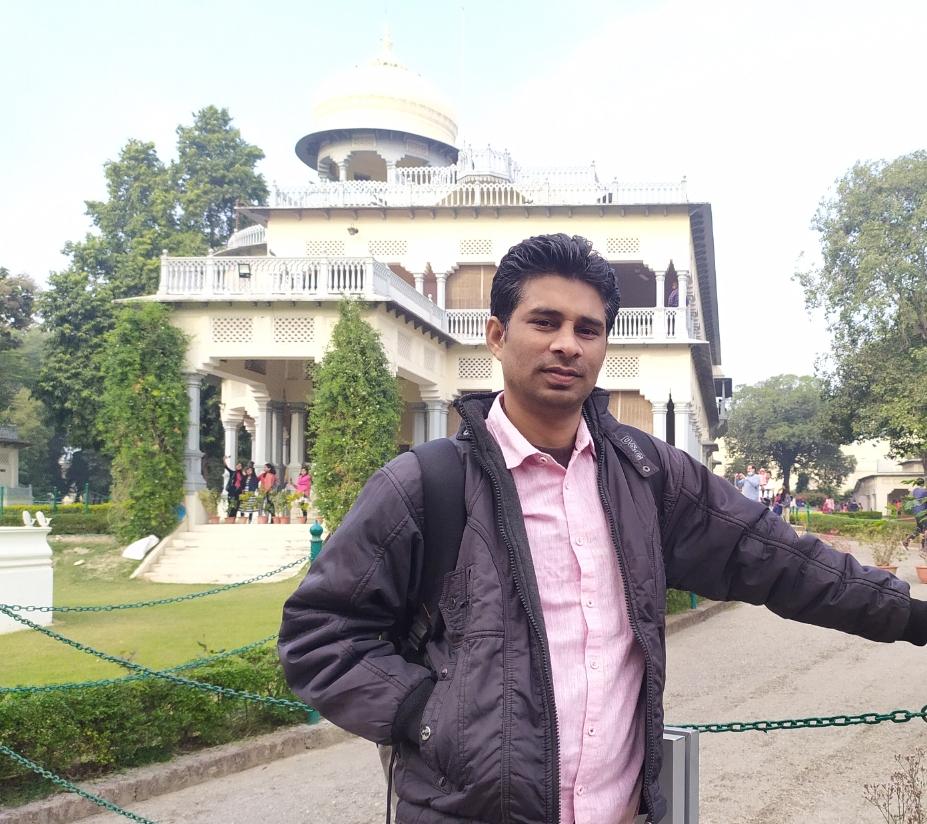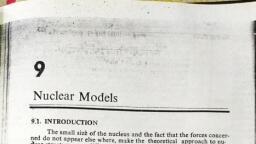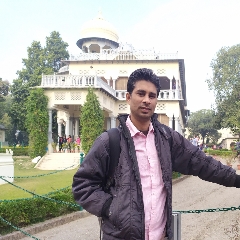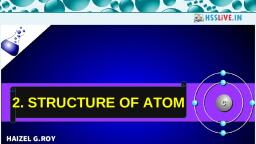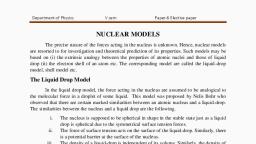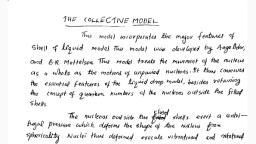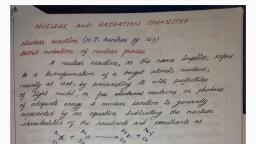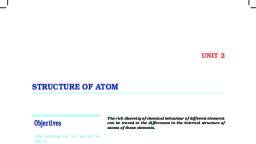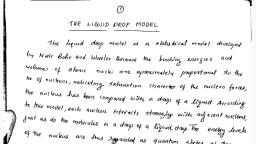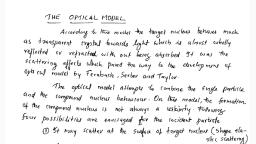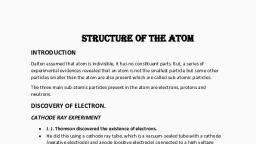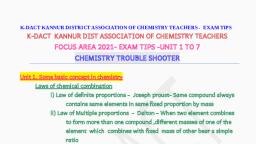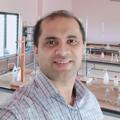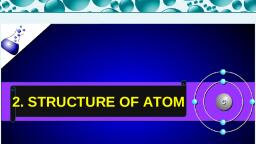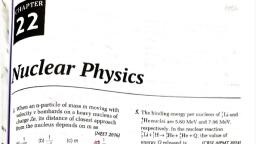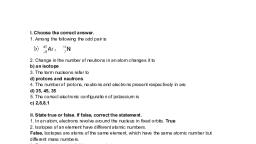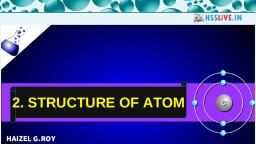Page 2 :
Wiislear Wrolleds és, “BRS (NAR) Hay ()-Hen ay CO) 788, | Fo orale, , i ‘ aif, where rN*. represents: the cigenvalues of operator R. The phdnges dil, the energy levels of selected single particle nuclear states, \as ‘a function of dis shown in fig. 9'10.: ~ ag, , , , w, , , , , , (a) (6), , Fig. 9.10. Single particle levels plotted as a function of 8., (a) 82 << N < 126, (b) 50< Z < 82., , The hydrodynamic picture of the nucleus also explains other, observed rotational bands besides the ground state rotational band, in deformed even-even nuclei. These bands are formed from the, coupling of nuclear rotations to a variety of a vibrational oscillations. The unified model yields quadrupole moments that agree with, experiment much better., , ee SUPER-CONDUCTIVITY MODEL, , According to the theory of super conductivity the fermions of a, superconductor or a nucleus (for which fermions are the nucleons), in its lowest energy state are paired individually. Total angular, momentum of each member of the pair is equal and opposite to the, other member and thus the total angular momentum of the system, is zero for an even-even nucleus. The forces between any single pair, are suwii range and act only between that pair of particles, but the, longer range force holds the pairs together in a nuclear system., , According to this model the individual nucleons retain their, shell model states. The quantum numbers /, j and -tmy, are used to, describe the pairing of nucleons. With in two closed shells the nuclear, shell model predicts a determinable arrangement for individual nucleon states. For example the 2ps;2, gre, 2Pira aNd Lge States accor:, ding to this order are predicted between the closed shell at N=28 ami, that at N==50. If individual nucleons are noninteracting, as sugges!, by shell model, the first nucleon or two beyond a closed shell would, be expected to be descriable by the lowest energy state config, beyond the closed shell. However, quantum mechanics allows some, , ees
Page 3 :
~366, , Nuclear Physics, , admixture of levels. For example, in the nuclide, j,Ni* the two, neutrons would be expected to be py fermions They ate in this arte, inmost of the time (about 66%) but according to calculations thi, are expected to spend about 28% of their time as Sus neutrons, 39), of ther time as py, neutrons and 3% of their time as gps neutrons., , A missing nucleon (hole) can create the same effect as an extra, nucleon. Thus a nucleus with two nucleons less than a closed shell, can be treated in a manner analogous to a nucleus with two extra, nucleons. For example, the nuclide sxPb*” has 4 neutron pairs (or 8, holes) less than the doubly closed shell nuclide Pb. The neutron, levels immediately between the closed shell at N=126 and that at, N=82 are in descending order, 3py2 2fsra, 3pslay Lissa 1g), and 2f;/5,, as shown in Fig. 9°10. We would expect the ground state of Pb™ to, appear as two p,), holes and six f,, holes. The state is thus described, @S & Pye * fp * configuration. Negative number indicates the number, of holes. Enough energy is required to break a pair from a stable, bucleat system consisting solely of pairs. After the pair is broken,, each scparate particle (hole) goes into a state that can be described, by shell model configuration. Therefore, the particles of these unpaired, State take on many characteristic of the non-interacting particles of, the shell model. However, they are still coupled to the remaining, paired particles by longer range nuclear forces. Vibrational and, rotational states that are observed in energy gap can be explained, by this model by assuming that the long range part of the nuclear, force is a quadrupole force that caninteract between particles in, different orbits as well as in the same orbit., , The formalism of the super-conductivity model of the nucleus, gives approximately the same levels as the other models. This model, is more satisfactory than others. Unfortunately, no single model has, been found that can correlate all or even a major fraction of the, existing experimental data. No doubt, models such as the unified and, super-conductivity mcdels have shown considerable success in predicting the basic features of nuclear levels, but we have to do more, in this field., , EXERCISES, , Example 1. Estimate the Fermi energles of neutrons and protons, in the centre of U**, Assume the density of nuclear matter in the centre, of the U** nucleus to be 2X 10% nucleus cm™*., , fit N as, Fermi energy of neutron Ey=(3*)*/*, aul?), , . ; (10545 x 10-4) ( 146 ", vo Er=(3 x3 14) erg TGTaeD ScTnTF ax 10, , =48'99 MeV. ‘~, Similarly the Fermi energy of proton Ey=35'99 MeV., , Example 2. Show that the wavefunction inside the spherical box, (V=0,r < R; V=eo,r > R) ofa particle of spin}, energy B, angular momentum | is
